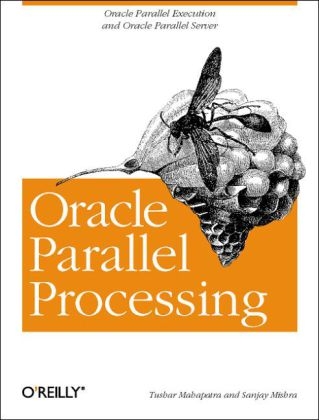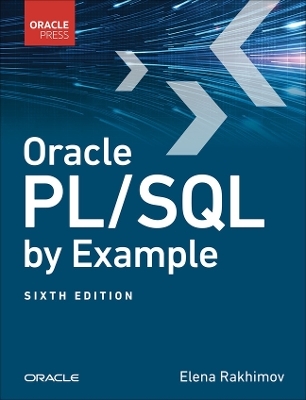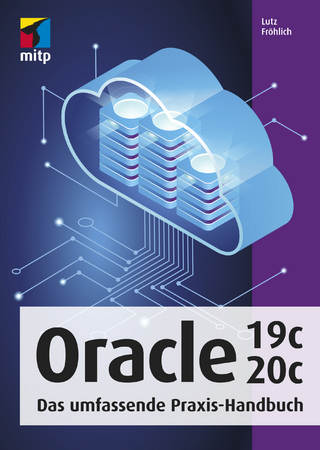
Oracle Parallel Processing
O'Reilly Media (Verlag)
978-1-56592-701-8 (ISBN)
- Titel ist leider vergriffen;
keine Neuauflage - Artikel merken
Parallel processing involves dividing a large computer task into several smaller ones, and then working on each of the smaller tasks simultaneously. The goal of this divide-and-conquer approach is to complete the larger task in less time than it would have taken to do it in one large chunk. Parallel processing is becoming increasingly important to database computing. That's because, these days, databases often grow to enormous sizes and are accessed by large numbers of users. Such growth strains the ability of single-processor and single-computer systems to handle the load. More and more, organizations are turning to parallel processing technologies to give them the performance, scalability, and reliability they need. This text describes the full range of parallel processing capabilities in the Oracle environment, which supports a number of parallel architectures, products, and features. Selecting, installing, administering, and tuning these facilities demands a lot from system architects and administrators. Unfortunately, if these tasks aren't done properly, major performance problems result.
The book's organization lays the groundwork for successful Oracle parallel processing, with sections that unpack both the major implications of the technology and its details: parallel processing overview - what are its features, benefits, and pitfalls; who needs it and who doesn't?; and what features does Oracle provide, and what are their requirements and overhead implications? The authors take a close look at these issues and present the various parallel architectures (Symmetric Multiprocessing or SMP, Massively Parallel Processing or MPP, clustered systems, and Non Uniform Memory Access or NUMA). The text also covers parallel execution as Oracle supports a variety of parallel execution features in the database. The book shows how to use, administer, and tune all of these features: parallel query, parallel data loading, parallel Data Manipulation Language (DML), parallel object creation, parallel recovery, parallel replication propagation, and parallel function execution. Lastly, the book provides information on Oracle Parallel Server, as Oracle also provides the extra-cost OPS option that makes it possible to spread work over both multiple CPUs and multiple nodes.
The book covers requirements, administration, monitoring, tuning, and recovery issues.
Tushar Mahapatra has been working as a software developer and consultant since 1987 and has worked on a variety of OLTP and DSS projects using the Oracle database. Presently, as a database architect for a Fortune 500 company, he is responsible for the design, implementation, and deployment of applications in an Oracle Parallel Server environment. He also runs a small consulting company that provides database design, application development, and database administration services for Oracle databases. Tushar has a bachelor's degree in Electrical Engineering and a master's degree in Computer Science and Management. He lives in New Jersey with his wife Sasmita and their two children. He can be reached by email at tkm@mitrasystems.com. Sanjay Mishra is a certified Oracle database administrator with more than nine years of IT experience. For the past six years, he has been involved in the design, architecture, and implementation of many mission- critical and decision support databases. He has worked extensively in the areas of database architecture, database management, backup/recovery, disaster planning, performance tuning, Oracle Parallel Server, and parallel execution. He has a Bachelor of Engineering degree in Electrical Engineering and a Master of Engineering degree in Systems Science and Automation. He loves hiking and trekking and has climbed a mountain pass more than 12,000 feet high in the Himalayas. He is married to Sudipti, and both of them like movies and are ardent cricket fans. He can be reached at skm69@hotmail.com.
Preface I. Overview 1. Introduction About Parallel Processing Parallel Processing for Databases Parallel Processing in Oracle Overhead for Oracle Parallel Processing Requirements for Oracle's Parallel Features 2. Architectures for Parallel Processing Hardware Architectures High-Speed Interconnect Software Architectures of Parallel Database Systems Oracle's Parallel Processing Architecture II. Oracle Parallel Execution 3. Parallel Execution Concepts What Is Parallel SQL? How Parallel Execution Works 4. Using Parallel Execution Parallel Query Parallel DML Parallel DDL Parallel Data Loading Parallel Recovery Parallel Replication Propagation 5. Monitoring and Tuning Parallel Execution Tuning Overview Dynamic Performance Views Using EXPLAIN PLAN to View Parallel Execution Tuning Tips for Parallel Execution Automatic Tuning of Parallel Execution in Oracle8i III. Oracle Parallel Server 6. Oracle Parallel Server Architecture OPS and Oracle Instances Synchronization Between Instances OPS Impact on Database Files Integrated Distributed Lock Manager Group Membership Service Rollback Segments in OPS 7. Administering an OPS Database Creating an OPS Database Starting and Stopping an OPS Database Managing Instance Groups Backing Up an OPS Database Recovering an OPS Database 8. Locking Mechanisms in OPS Cache Coherency Lock Types in OPS Lock Modes Parallel Cache Management PCM Lock Types PCM Lock Allocation Parameters and Verification PCM Lock Allocation Guidelines Non-PCM Locks 9. Storage Management in OPS Using Free Lists and Free List Groups The PCTFREE Parameter: Reserving Free Space Using Reverse Key Indexes 10. Monitoring and Tuning OPS OPS Performance Views Dynamic Performance Views Monitoring PCM Locking Monitoring Overall Statistics Monitoring and Tuning IDLM Oracle Performance Manager 11. Partitioning for OPS When Is Partitioning Needed? Partitioning Techniques Changing Your Partitioning Scheme 12. Application Failover Maintaining a Failover Database Planning for Failover with OPS Failover Complexity Failover Methods 13. Parallel Execution in OPS How Parallel Execution Works with OPS Disk Affinity Instance Groups for Parallel Execution Appendix: Case Studies Index
| Erscheint lt. Verlag | 19.9.2000 |
|---|---|
| Zusatzinfo | index |
| Verlagsort | Sebastopol |
| Sprache | englisch |
| Maße | 178 x 234 mm |
| Gewicht | 556 g |
| Einbandart | kartoniert |
| Themenwelt | Informatik ► Datenbanken ► Oracle |
| ISBN-10 | 1-56592-701-X / 156592701X |
| ISBN-13 | 978-1-56592-701-8 / 9781565927018 |
| Zustand | Neuware |
| Haben Sie eine Frage zum Produkt? |
aus dem Bereich


